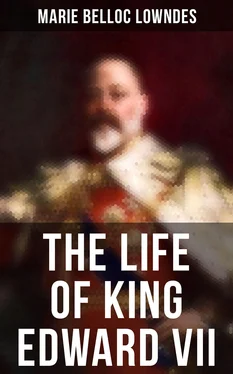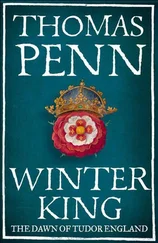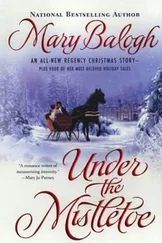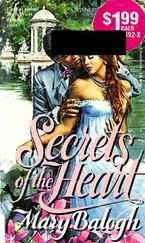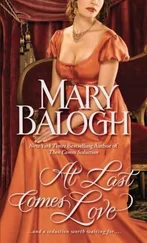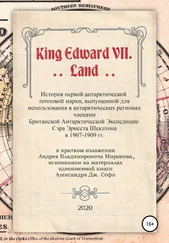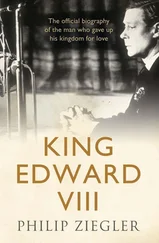The Prince Consort, with the care and forethought which always distinguished him in such matters, made a most careful choice of those who were to accompany his young son. Both Queen Victoria and he felt the greatest confidence in the Duke of Newcastle, the grandfather of the present peer, and with him Prince Albert arranged all the details of the Prince’s Canadian visit. The careful and kindly father forgot nothing that might be needed. Not only did he take special pains to secure that the young Prince should learn something of the history, customs, and prejudices of the Canadian people, but he supplied the Duke with memoranda which might be found useful in drawing up the answers to be made to the addresses which were certain to be presented to the Prince of Wales during his progress through the Dominion. The best proof of the Prince Consort’s wisdom is to be found in the fact that every one of these notes afterwards turned out to be simply invaluable, owing to the peculiar aptness with which they had been framed to suit the circumstances of each locality where an address was likely to be received.
When it became known on the American Continent that the Prince of Wales was really coming to Canada, the President of the United States, Mr. Buchanan, wrote to Queen Victoria explaining how cordial a welcome the Prince of Wales would receive at Washington should he extend his visit to the United States.
Her Majesty returned a cordial answer, informing Mr. Buchanan, and through him the American people, that the Prince would return home through America, and that it would give him great pleasure to have an opportunity of testifying to the President in person the kindly feelings which animated the British nation towards America. At the same time the American people were told that the future British Sovereign would, from the moment of his leaving British soil, drop all Royal state, and that he would simply travel as “Lord Renfrew.” In this again Her Majesty showed her great wisdom, for it would have been extremely awkward for the Prince of Wales, the descendant of King George III., to have visited the American Republic in his quality as Heir-Apparent to the British Throne.
After a pleasant but uneventful voyage on board the frigate Hero , escorted by H.M.S. Ariadne , the Prince of Wales first stepped on Transatlantic soil at St. John’s, the capital of Newfoundland, the oldest British colony, on 24th July 1860. The morning was rainy, but the moment His Royal Highness landed the sun shone out, bursting through the clouds, and this was considered by those present to be a very happy omen.
On that day the Prince may be said to have really had his first glimpse of that round of official duties to which he seemed to take naturally, and in which he was destined to become so expert.
After the Governor of Newfoundland had been formally presented to the Prince, the Royal party, which comprised, in addition to His Royal Highness, the Duke of Newcastle, General Bruce, and Major Teesdale, went straight to Government House, where the Prince held a reception, and listened to a considerable number of addresses. The day did not end till the next morning, for in the evening a grand ball was given by Sir Alexander Bannerman, and King Edward won all hearts by mixing freely with the company, and dancing, not only with the ladies belonging to the Government and official circles, but with the wives and daughters of the fishermen. It was noticed that the Prince was quite remarkably like the portraits of his Royal mother on the British coins, and he displayed, not only in Newfoundland but also during the many fatiguing days that followed, the extraordinary tact and admirable breeding which have continually year after year increased the affection with which he is regarded by the British people.
The wife of the then Archdeacon of St. John’s, in an interesting letter home, puts on record the impression produced by the King in Newfoundland:—
“His appearance is very much in his favour, and his youth and royal dignified manners and bearing seem to have touched all hearts, for there is scarcely a man or woman who can speak of him without tears. The rough fishermen and their wives are quite wild about him, and we hear of nothing but their admiration. Their most frequent exclamation is, ‘God bless his pretty face and send him a good wife.’”
At Halifax, the news that his sister, the Princess Frederick of Prussia, had given birth to a little daughter met him, and he hastened to write home his affectionate congratulations on the event.
The Prince’s tour through Canada may be said to have been one long triumphal procession. It was marred by no unpleasant incident, in spite of the fact that at Kingston and Toronto the Orangemen tried to induce the Prince to pass under arches decorated with their party symbols and mottoes. Thanks, however, to the Duke of Newcastle’s tact and firmness, the attempt failed, and the incident merely served to illustrate the young Prince’s freedom from party bias. Everywhere the Royal visitor produced the happiest impressions, and, thanks to his youth, he was able to endure considerable fatigue without apparently being any the worse for it.
In America “Lord Renfrew’s” arrival was awaited with the utmost impatience, and while travelling over the Dominion His Royal Highness was surrounded by American reporters. Indeed, it is said that the Prince of Wales’s visit to Canada formed the first occasion on which press telegrams were used to any lavish extent. One enterprising journalist used to transmit to his paper long chapters from the Gospel according to St. Matthew and from the Book of Revelation in order to monopolise the wires while he was gathering material for his daily report of the Royal journey. At a great ball given in Quebec the Prince tripped and fell with his partner—the article recording this event was headed Honi soit qui mal y pense .
The Royal visit to Montreal is still remembered in Canada. The Prince and his suite arrived there on 25th August, and the Prince, after opening a local exhibition, inaugurating a bridge, holding a review, and attending some native games, danced all night with the greatest spirit, even singing with the band when it struck up his favourite air.
Many little stories were told of the King’s good-nature and affability. Hearing by accident that an old sailor who had served with Nelson on board the Trafalgar had been court-martialled, the Prince begged him off, and asked that he might be restored to his rank in the service.
The Canadian Government provided a number of riding-horses in order that the King might see Niagara Falls from several points of view, and he has since often declared that this was one of the finest sights he ever saw in his life. Next day, in the presence of the Royal party and of thousands of spectators, Canadian and American, the famous rope-walker, Blondin, crossed Niagara river upon a rope, walking upon stilts, and carrying a man on his back. After the ordeal was over, Blondin had the honour of being presented to the Prince. The latter, with much emotion, exclaimed, “Thank God, it is all over!” and begged him earnestly not to attempt the feat again, but the famous rope-walker assured His Royal Highness that there was no danger whatever, and offered to carry him across on his back if he would go, but the Prince briefly declined! The Prince seems to have been quite fascinated by the marvellous Falls. On 17th September he insisted on riding over on American ground for a farewell view of Niagara.
The Prince of Wales formally crossed from Canadian territory to the States on the night of 20th September, making his appearance on Republican soil, as had been arranged, as Lord Renfrew. At Hamilton, the last place in Canada where he halted, the Prince made a speech, in the course of which he observed:
Читать дальше
